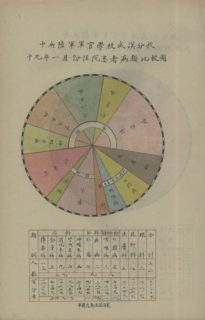Soldiers’ woes in a pie

In the early twentieth century, Chinese armies were badly lacking in medical care. The National Revolutionary Army of the Nanjing Government under Jiang Jieshi (Chiang Kai-shek) sought to increase the number of biomedically trained doctors and improve the application of scientific military medicine, including areas such as surgery, inner medicine, hygiene, and epidemic prevention. The image shows both a pie chart and a table showing the distribution of types of diseases among hospitalized patients at the Wuhan Branch School of the Central Military Academy in January 1930. The total number of 72 patients is low as compared to the number of outpatients (334) treated in the same month, which is shown in a similar chart. Wounds and injuries – from gunshots or shrapnel, for instance – were common among military patients, but military doctors also had to deal with all kinds of other maladies. Among the biggest concerns of the army were infectious and contagious diseases, including sexually transmitted diseases, which could seriously harm its combat readiness. Statistical tables, charts, diagrams, and graphics helped medical practitioners and the army leadership to visualize the medical situation of the army and allocate resources respectively. On the other hand, statistics were also an example for and a tool to promote scientific medicine and its practicality, especially in the case of military affairs, in the Republican period.
(posted by Dr. Nicolas Schillinger)
